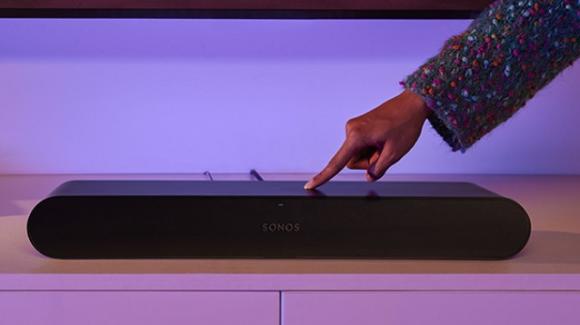At the interesting event organized in New York Sonos presented many of the innovations leaked in recent days, including the Sonos Ray soundbar and its first voice assistant, Sonos Voice Control.
Listen to this article
In recent days, a maxi leak confirmed the arrival of several news from the Californian brand Sonos which – in fact – in the past few hours held an event in New York, during which it presented various news to the press, including new colors for an already known product, a new soundbar and even a voice assistant.
The minor novelty seems to have been ignored, namely the arrival of the Sonos Roam portable speaker also in Wave blue, Sunset red and Olive green. Sonos has unveiled the first “bomb” of the day, namely its intention to lower, at the price level, the entry point in its bouquet of products, a role previously played by the Sonos Beam soundbar, priced at 499 euros. With the arrival of the new Sonos Ray soundbar, on sale from 7 June in matt black and white, it will be possible to enter the Sonos ecosystem at a price of 299 euros.
The soundbar in question (559 x 95 x 71 mm for 1.95 kg) has an elongated ellipsoidal shape, with touch buttons in the back and, in front, an infrared receiver, so that it can be controlled with a common compatible remote control: easy to placed under a large-screen TV, but also usable to build a small home theater, perhaps in tandem with a pair of Sonos One speakers connected wirelessly, the Sonos Ray soundbar manages to equip itself well despite a volume of only 3.5 liters .
Inside, in fact, there are 4 drivers, chaired by class D amplifiers, including two midranges towards the inside and, towards the outside, two tweeters which, thanks to bidirectional waveguides, shoot the sound a a little frontally but also laterally, so that with the phenomenon of sound reflection on the walls it is possible to have a fairly enveloping sound stage and not a squashed sound on the front. Via the S2 app it is then possible to adjust the volume and equalize for example bass or treble, while with Night Sound you avoid disturbing the neighbors by lowering the loud tones in favor of the weak ones when it is evening, and with the improvement of the speech it becomes easier follow the dialogues without altering the overall volume. There is also the Trueplay environmental calibration function (an iPhone microphone is used to capture the specificities of a room so that the speaker adjusts the emission), compatibility with the Sonos ecosystem, and support for AirPlay 2 of Apple, perhaps to connect an Apple TV.
Connectivity includes Wi-Fi in single band 2.4, and RJ45 for Ethernet. Among the waivers implemented to lower the price, there is the absence of integrated microphones and, on the back, of an HDMI that makes it impossible to connect a recent console but also to take advantage of the CEC to control everything with the TV remote control or use the Dolby Atmos . On the other hand, for one that is also compatible with older TVs, there is the optical input, with support for PCM, Dolby Digital, and DTS Digital Surround encodings.
The other big news of the event was the introduction of the Sonos Voice Control assistant, arriving from the USA, in English, on June 1st, with the voice of the voice actor Giancarlo Esposito of Breaking Bad: specifically, this digital concierge, which coexists on compatible devices equipped with microphone with Assistant and Alexa, is a mere home support for listening to your own music on the home theater you have.
Compared to generalist colleagues, who can also be asked for news and the weather, in this case Sonos has focused on a few tasks related to audio playback, such as grouping multiple rooms or playback devices together, or playing a given song fished from some streaming services (e.g. Sonos Radio, Pandora, Amazon Music, Deezer and Apple Music, with other services provided below) to launch it in playback on a given device, not counting the classic basic playback controls (e.g. volume, skip of track, pause, etc), without sending anything to the Sonos servers for interpretation and anything returning from them, since all the necessary processing is carried out by artificial intelligence locally.

